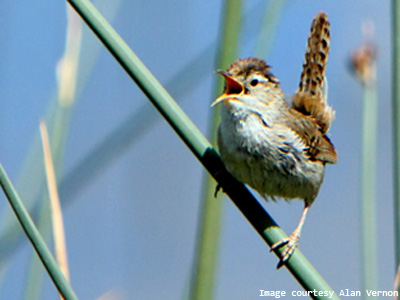Twitter tips: what I have learned about getting more followers
Posted on 27 November 2012
Twitter tips: what I have learned about getting more followers
 By Simon Hettrick, Deputy Director.
By Simon Hettrick, Deputy Director.
Back in August, I wrote a slightly cynical post in which I pondered the use of Twitter for publicising news from a research project. My plan was to find out more about the dark arts of Twitter and report back. At the time, the Institute had just under 200 followers. Three months later, we have 600 followers, way more re-tweets and significantly more hits on our website. How did this magic happen?
First of all, thanks to Suzanne Smith from the University of Southampton, Nick Pearce from Durham University and Martin Hawksey from JISC, and all the other people who provided their invaluable Twitter expertise.
1. Who are you?
If we were marketing people, we would call this step branding. But we're not marketing people, so let's just say that it's important to make it easy for people to judge whether they will be interested in you.
The first step is to update your profile: choose a Twitter name that accurately reflects you and add a suitable image. Now write a biography that describes who you are, why people should be interested in you and what you stand for. Think about it from the point of view of your potential followers. What are they looking for? What motivates them? What do they like? This is easier said that done: you're allowed only 20 characters for your name (Software Sustainability Institute is 33) and 160 characters for your biography. However, this practice in brevity will come in handy when composing tweets.
It's a good idea to update your homepage too. You can choose one of the 19 designs offered by Twitter, but there are about 500 million other Twitter users making that choice too. It's worth investing a little time into a bespoke design that will make you stand out and instantly identify you.
2. Content is king!
Build it and they will come is a well known fallacy in the open-source software community. It's an idiom that applies equally well to Twitter: just because you have a Twitter account does not mean you will automatically attract users.
Users are attracted by your tweets, so you need to ensure that they are interesting and posted regularly enough to show activity. Of course, interesting is subjective. We happen to think that software sustainability is pretty interesting, but it's unlikely that the followers of Justin Beiber would agree (and vice versa). You should be steered by your community. If a post gets a lot of retweets or leads to a lot of hits on your website, it shows that there is interest in that subject, which suggests that you should investigate it further. As commented by Paul Wheatley on my first post about Twitter, it's also important to know what not to tweet about. A work account shouldn't include posts about your cat (unless you're a vet), your political views (unless you're a politician) or take unnecessary swipes at meaningless pop stars (like Justin Beiber).
3. Follow, follow and follow again
Once you have a Twitter account that's worth following, it's time to start working on gaining some followers. The first step it to make sure that everyone knows about your Twitter ID: it should be on your website, on your publicity materials, presentations, business cards and anything else that's distributed to your community. The next step is to follow people.
You need to find people who are interested in your work and follow them. Everyone you follow will receive an email from Twitter, and in that email will be a link that allows them to follow you back. This makes it very easy to convert the people you follow into followers. The simple act of following relevant people is one of the main reasons that we have tripled our followers in the last few months. To find potential followers, look for people and groups that are similar to you and then follow their followers.
There are limits of course. The first is that you don't want to gain a reputation for spamming people. Rather than just mindlessly clicking your way through followers, make sure you have read their biography and feel that they will be interested in following you. Unless you have a lot of followers, you will be limited to following 2000 people at a time.
4. Lies, damned lies and statistics
Now that you're investing all this time into Twitter, it's a good time to start following your statistics. This lets you track the work that you're doing and allows you to assess the success of different Twitter strategies you've implemented.
I have just started using Klout and Crowdbooster, which seem to work well together. But there appear to be thousands of similar applications out there. If you've got a better recommendation please comment below.
In short, Klout gives you an overall score of how popular you are. This is based on things like the number of your followers, retweets and click throughs. The score appears to be non-linear, with Stephen Fry (and his five million followers) receiving a score of 90, a dead Twitter account of my own (with its 9 followers) receiving a score of 12 and the Institute receiving a score of 48. The great thing about Klout is that its score gives you a quick measure of your Twitter popularity.
If it's detail you want, you should try out Crowdbooster. It provides reams of information about the impact you are having in your community. It's also the only application that I have found that provides a graph of the number of Twitter followers against date - and this kind of graph comes in handy when demonstrating how successful your Twitter campaign has been.
5. It takes time (but it's worth it)
The one thing that has become patently obvious with this short Twitter campaign of ours is that it takes time. It takes time to set up an infrastructure that will provide regular tweets, it takes time to develop a Twitter identity and it takes a lot of time to build your community. However, we've seen a significant jump in website hits, and this means that many more people are coming to our site and learning about software sustainability. Reaching new people is more than a sufficient pay off for the effort invested in running a Twitter campaign.
And for my next post...
I've only just started to scratch Twitter's surface. There's a lot more work to be done with engaging our community and I haven't even touched on things like retweets and hashtags.

